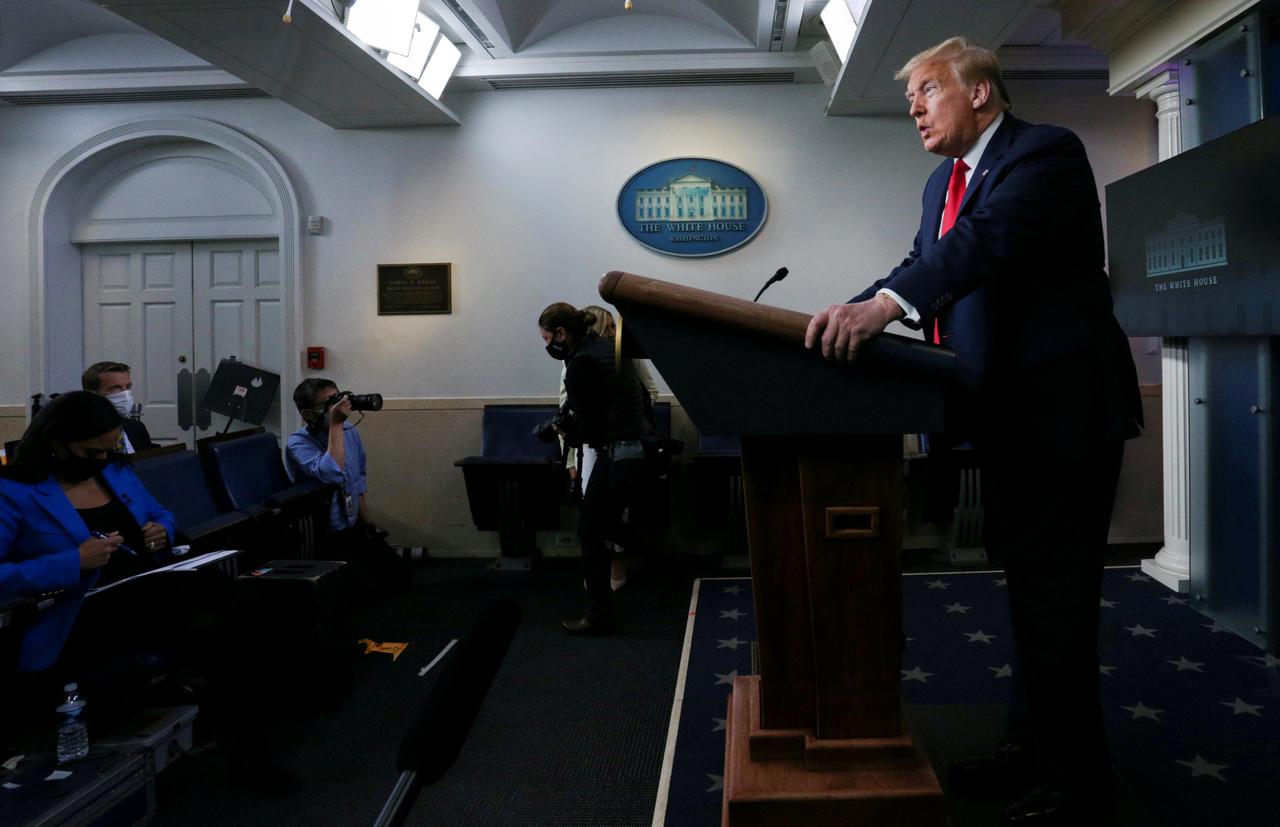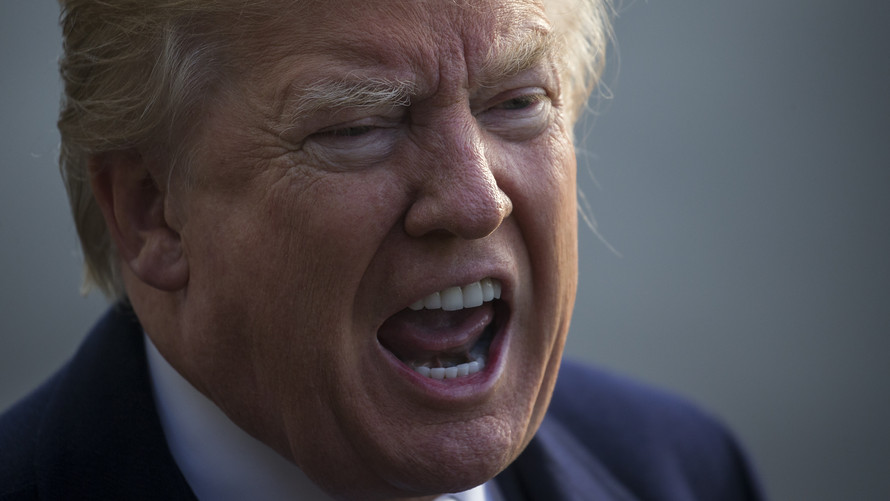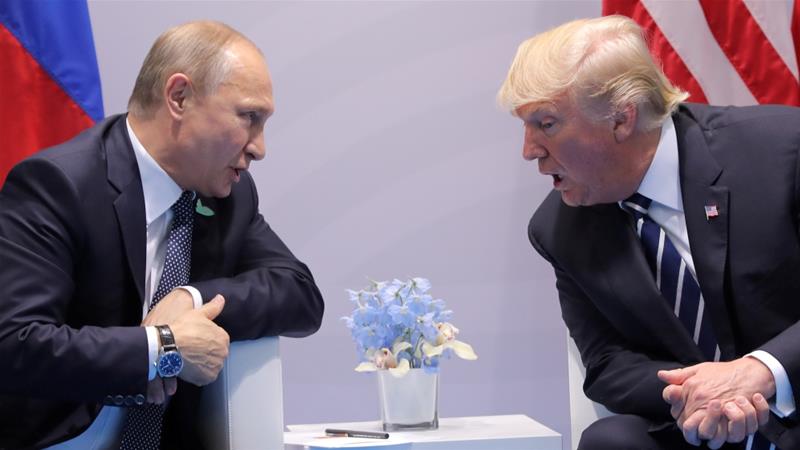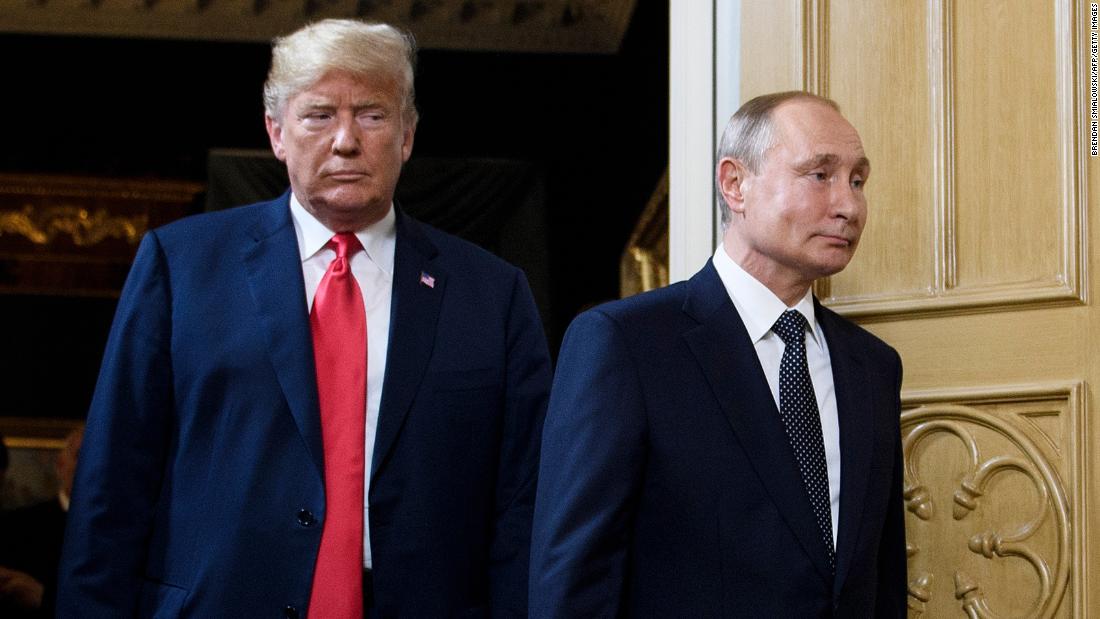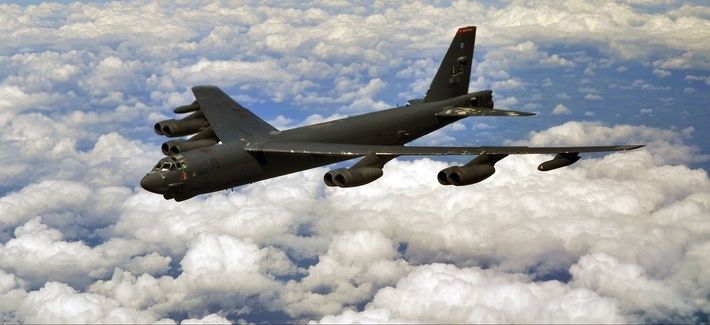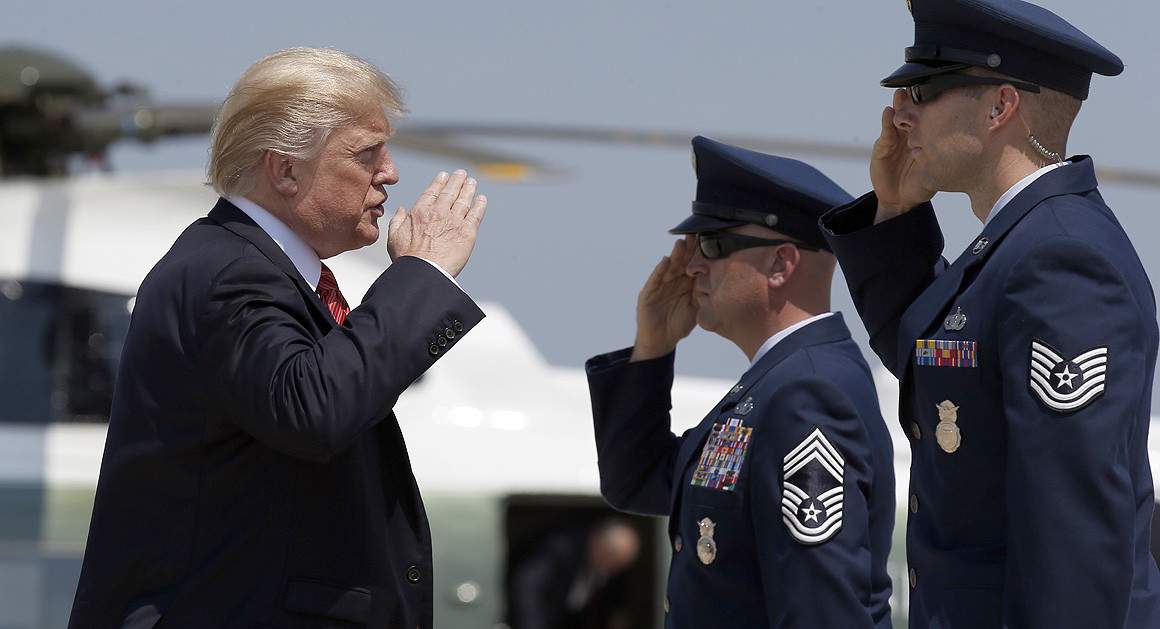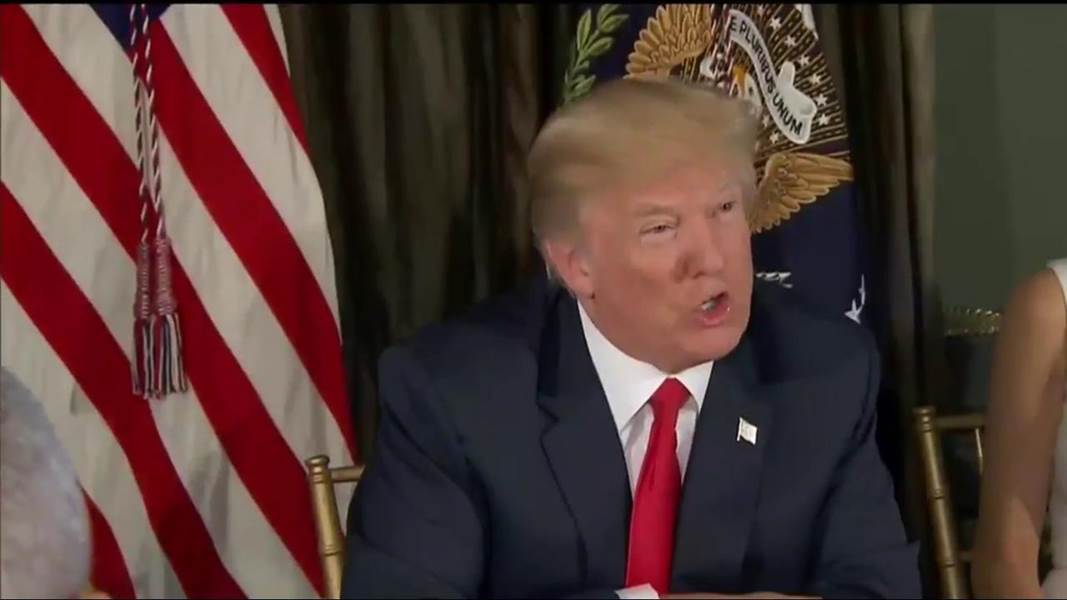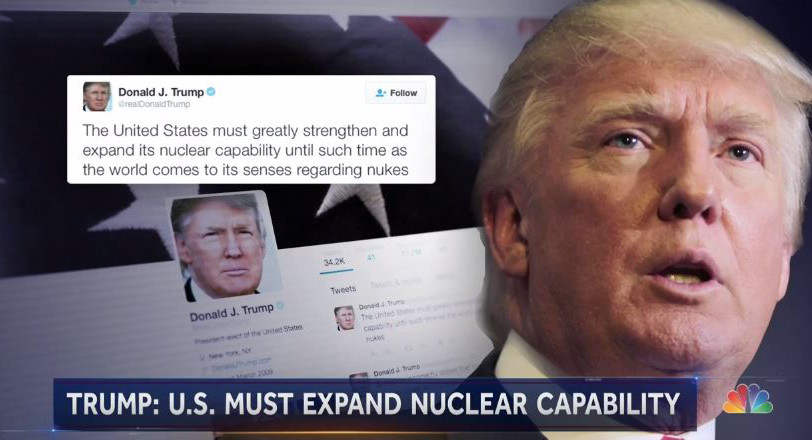The Trump administration is considering proposing smaller, more tactical nuclear weapons that would cause less damage than traditional thermonuclear bombs — a move that would give military commanders more options but could also make the use of atomic arms more likely.
A high-level panel created by President Donald Trump to evaluate the nuclear arsenal is reviewing various options for adding a more modern “low-yield” bomb, according to sources involved in the review, to further deter Russia, North Korea or other potential nuclear adversaries.
Approval of such weapons — whether designed to be delivered by missile, aircraft or special forces — would mark a major reversal from the Obama administration, which sought to limit reliance on nuclear arms and prohibited any new weapons or military capabilities. And critics say it would only make the actual use of atomic arms more likely.
“This capability is very warranted,” said one government official familiar with the deliberations who was not authorized to speak publicly about the yearlong Nuclear Posture Review, which Trump established by executive order his first week in office.
“The [nuclear review] has to credibly ask the military what they need to deter enemies,” added another official who supports such a proposal, particularly to confront Russia, which has raised the prominence of tactical nuclear weapons in its battle plans in recent years, including as a first-strike weapon. “Are [current weapons] going to be useful in all the scenarios we see?”
The idea of introducing a smaller-scale warhead to serve a more limited purpose than an all-out nuclear Armageddon is not new — and the U.S. government still retains some Cold War-era weapons that fit the category, including several that that can be “dialed down” to a smaller blast.
Yet new support for adding a more modern version is likely to set off a fierce debate in Congress, which would ultimately have to fund it, and raises questions about whether it would require a resumption of explosive nuclear tests after a 25-year moratorium and how other nuclear powers might respond. The Senate is expected to debate the issue of new nuclear options next week when it takes up the National Defense Authorization Act.
The push is also almost sure to reignite concerns on the part of some lawmakers who say they already don’t trust Trump with the nuclear codes and believe he has dangerously elevated their prominence in U.S. national security by publicly dismissing arms control treaties and talking opening about unleashing “fire and fury” on North Korea.
“If the U.S. moves now to develop a new nuclear weapon, it will send exactly the wrong signal at a time when international efforts to discourage the spread of nuclear weapons are under severe challenge,” said Steven Andreasen, a State Department official in the administrations of Ronald Reagan and George H.W. Bush who served as the director of arms control on the National Security Council in the Clinton administration. “If the world’s greatest conventional and nuclear military power decides it cannot defend itself without new nuclear weapons, we will undermine our ability to prevent other nations from developing or enhancing their own nuclear capabilities and we will further deepen the divisions between the US and other responsible countries.
The details of what is being considered are classified and a National Security Council spokeswoman said “it is too early to discuss” the panel’s deliberations, which are expected to wrap up by the end of the year.
But the review — which is led by the Pentagon and supported by the Department of Energy, which maintains the nation’s nuclear warheads — is undertaking a broad reassessment of the nation’s nuclear requirements — including its triad of land-based, sea-based and air-launched weapons.
The reassessment, the first of its kind since the one completed for President Barack Obama in 2010, is intended “to ensure that the United States’ nuclear deterrent is modern, robust, flexible, resilient, ready, and appropriately tailored to deter 21st-century threats and reassure our allies,” Trump directed.
The United States has long experience with lower-yield nuclear devices, or those on the lower range of kilotons. For example, the bombs the United States dropped on Japan in World War II were in the 15-20 kiloton range, while most modern nuclear weapons, like the W88 warhead that is mounted on submarine-launched missiles, is reportedly as large as 475 kilotons. The device tested by North Korea earlier this week was reportedly 140 kilotons.
So-called mini-nukes were a prominent element of the American arsenal during the early decades of the Cold War, when the Soviet Union’s conventional military capabilities far outstripped the United States and military commanders relied on battlefield nuclear weapons to make up for the vulnerability.
In the early 1950s, the Pentagon developed a nuclear artillery rocket known as the “Honest John” that was deployed to Europe as a means of deterring a massive Russian invasion. The Pentagon later introduced the so-called Davy Crockett, a bazooka with a nuclear munition in the range of 10 to 20 kilotons.
“We even had atomic demolition munitions,” said Philip Coyle, the Pentagon’s top weapons tester in the 1990s who also managed nuclear weapons programs at the Department of Energy. “They were made small enough so that U.S. Army soldiers could carry them in a backpack. It was a very heavy backpack. You wouldn’t want to carry them very far.”
More recently, during the administration of George W. Bush, the Pentagon sought to modify one of its current warheads — the B61 — so it could be tailored to strike smaller targets such as underground bunkers, like the type used by North Korea and Iran to conceal illicit weapons programs. The so-called Robust Nuclear Earth Penetrator was intended to rely on a modified version of the B-61, a nuclear bomb dropped from aircraft. But that effort was nixed by Congress.
The nuclear review now reviving the issue is taking some of its cues from a relatively obscure Pentagon study that was published in December, at the tail end of the Obama administration, the officials with knowledge of the process said.
That report by the Defense Science Board, a Pentagon advisory panel, set off what one Pentagon official called a “dust up” when it urged the military to consider “a more flexible nuclear enterprise that could produce, if needed, a rapid, tailored nuclear options for limited use should existing non-nuclear or nuclear options prove insufficient.”
But the finding “emerged from a serious rethinking about how future regional conflicts involving the United States and its allies could play out,” John Harvey, who served as adviser to the secretary of Defense for nuclear, chemical and biological programs between 2009 and 2013, recounted at a Capitol Hill event in June.
“… There is increasing concern that, in a conventional conflict, an adversary could employ very limited nuclear use as part of a strategy to maximize gains or minimize losses,” he explained. Some call this an “‘escalate to win’ strategy.”
Air Force Gen. Paul Selva, the vice chairman of the Joint Chiefs of Staff, at an appearance before an defense industry group last month, described the rationale this way: “If the only options we have now are to go with high-yield weapons that create a level of indiscriminate killing that the president can’t accept, we haven’t provided him with an option.”
But critics question the logic of responding to Russian moves in kind.
“[Vladimir] Putin’s doctrine and some of his statements and those of his military officers are reckless,” said Andrew Weber, who served as assistant secretary of Defense responsible for nuclear policy in the Obama administration. “Does that mean we should ape and mimic his reckless doctrine?”
“The premise that our deterrent is not credible because we don’t have enough smaller options — or smaller nuclear weapons — is false,” he added in an interview. “We do have them.”
For example, he cited the B61, which recently underwent a refurbishment and can be as powerful as less than a kiloton up to 340 kilotons, and the W80, which is fitted to an air-launched cruise missile that can deliver a nuclear blast as low as five kilotons or as high as 80, according to public data.
A new more modern version of a low-yield nuke, he added, would “increase reliance on nuclear weapons. It is an old, Cold War idea.”
Joe Cirincione, president of Ploughshares Fund, a foundation that advocates reducing nuclear arms, also took issue with argument for more nuclear options.
“They decry the Russian argument,” he said of the proponents, “but it is is exactly the policy they are now favoring: advocating for use of a nuclear weapon early in a conflict.”
“It is difficult to imagine the circumstances under which we would need a military option in between our formidable conventional capabilities and our current low-yield nuclear weapons capabilities,” added Alexandra Bell, a former State Department arms control official. “Lawmakers should be very wary of any attempt to reduce the threshold for nuclear use. There is no such thing as a minor nuclear war.”
Others also express alarm that depending on what type of device the review might recommend, it might require the United States to restart nuclear tests to ensure its viability. The United States hasn’t detonated a nuclear weapon since 1992.
“If we actually started testing nuclear weapons all hell would break loose,” said Coyle, who is now on the board of the Center for Arms Control and Nonproliferation, a Washington think tank. “In today’s environment, if the U.S. were to test low-yield nuclear weapons others might start testing. Russia, Iran, China, Pakistan, India. It would certainly give North Korea reason to test as often as they wanted.”
In Cirincione’s view, the idea is fueled by economic, not security reasons.
“This is nuclear pork disguised as nuclear strategy,” he said. “This is a jobs program for a few government labs and a few contractors. This is an insane proposal. It would lower the threshold for nuclear use. It would make nuclear war more likely. it comes form the illusion that you could use a nuclear weapons and end a conflict on favorable terms. Once you cross the nuclear threshold you are inviting a nuclear response.”
But others involved in the deliberations contend that if the administration seeks funding for a new tactical nuke it might get a far more receptive audience in Congress.
Already Republicans are pushing to build a new cruise missile that some say would violate the 1987 Intermediate-range Nuclear Forces Treaty with Russia — a direct response to Moscow’s violations of the arms control pact. The Senate is expected to debate the issue next week when it takes of the defense policy bill, which includes a controversial provision similar to one already passed by the House.
[Politico]
